This is the final part of our tribute to the late Miguel Tavora. He died in December 2017 but his wisdom lives on, in this book, and in the minds of his pupils and in the hearts of his friends and loved ones…
Story – Christopher Hector Photos – Roslyn Neave
Part 1 here
Part 2 here
Part 3 here
Teachers attract like students, and Megan Joerg is right in tune with Miguel Tavora’s style of dressage instruction.
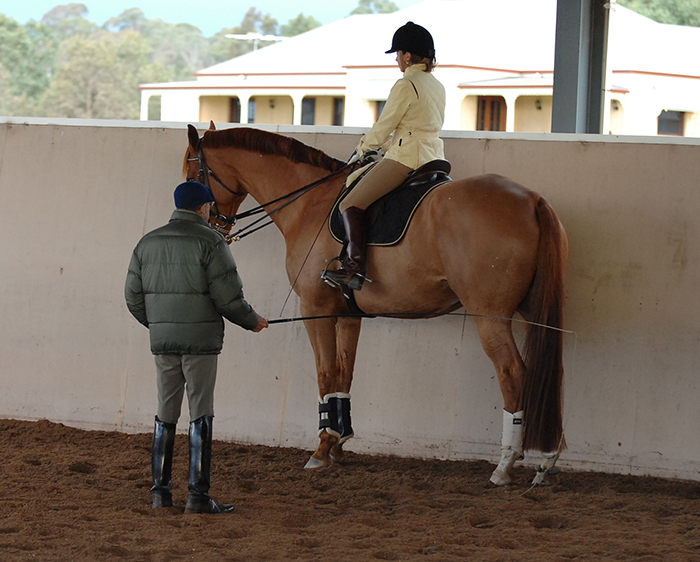
“I’ve been riding with Miguel for about five years now. My background is jumping, I was an eventer, then when I had children I became a showjumper. I lived in Spain for a while and I rode some Spanish stallions that I liked very much. I was always attracted to that, I hate to say ‘romantic’, but that light way of getting a horse going. I’m a little person, I ride big horses, I can’t have them heavy. Miguel’s emphasis has always been on that way…”
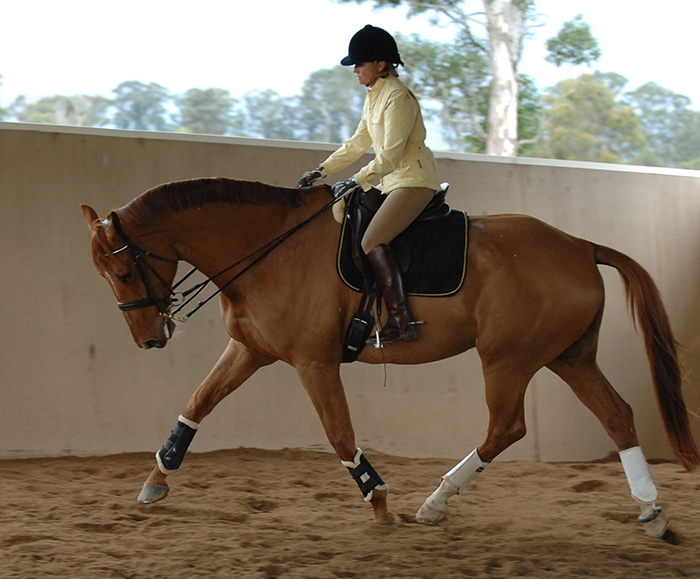
“After training with Miguel, going to do a test is the easy part, because you have ridden so many exercises, so many different figures beforehand. There’s always the emphasis on the gymnasticising of the horse, as you can see, my horse, Neversfelde Jaffa, is not particularly well-conformed, but through gymnastic work he is now strong enough to do some of the piaffe steps.”
story continues below the advertisement
Megan’s chestnut gelding, Jaffa is a giant of a horse, especially when you consider that the rider is somewhat on the short side. He was bred by Jane and Maurice Bruce, out of Maurie’s international Grand Prix Trakehner mare, Samoneinen, by the Dutch (frozen semen) stallion, Jet Set D.
Right from the start, Miguel is working on getting the horse longer, looser, more athletic, Megan swapping the trot diagonal from inside to outside, riding him deep at first (‘lower not longer’) but up in the canter.
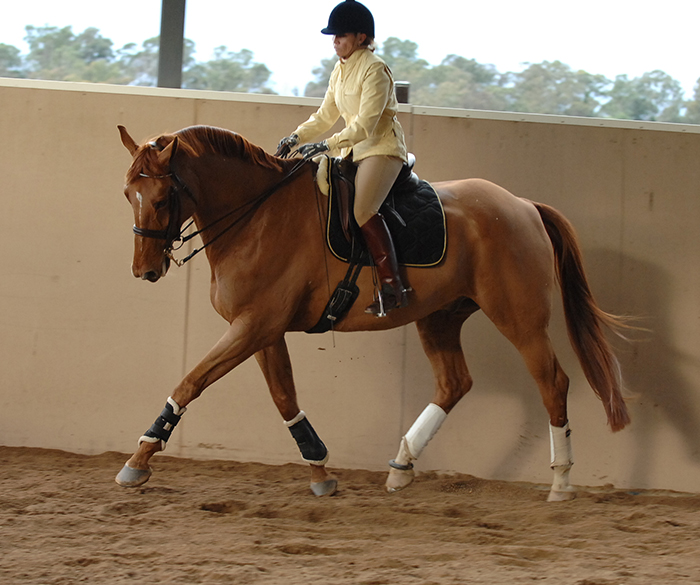
“Don’t lift the poll but don’t let him drop the poll. If you pull the poll up, he will go hollow, ride him up. Prepare and walk, canter.” And another perfectly effortless canter depart…
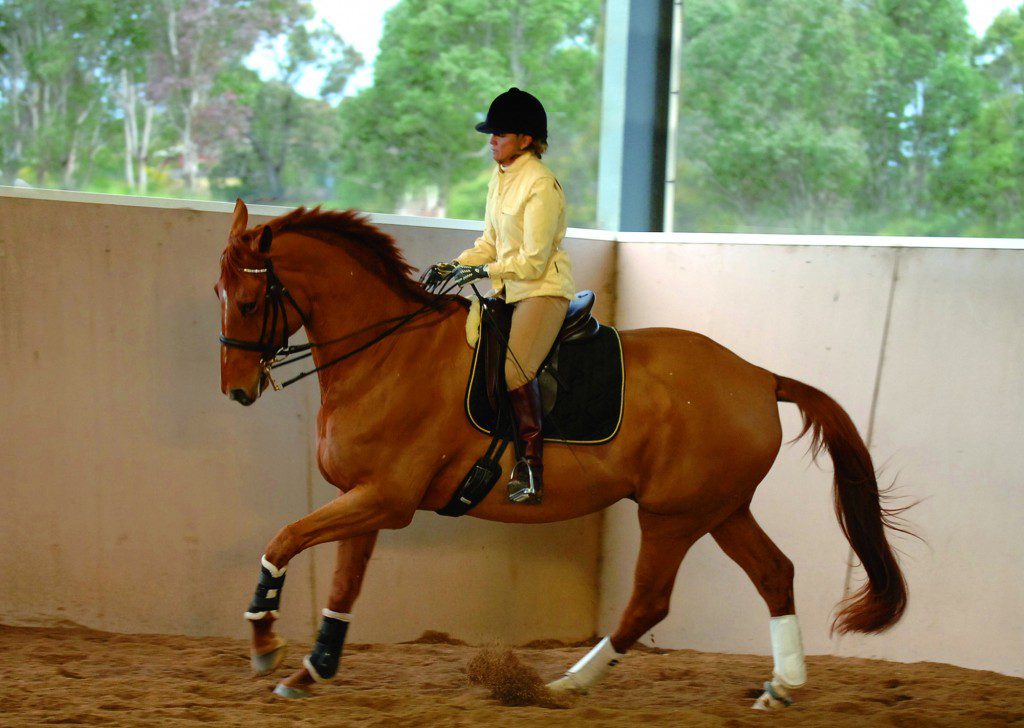
Lots of instructors talk about transitions, but Miguel is one who really uses them.
“Walk, trot, walk, trot, walk, trot – vibrate the rein to keep him up, inside diagonal, outside diagonal, walk, trot, walk, trot – push and give. Make the reins a little shorter to connect with your back, the reins are an extension of your back.”
Now came quite a spectacular exercise, especially fitting the big horse into the forty metre long side: Travers canter down the wall, with a half circle back to the wall in renvers, and renvers down the long side, out into another half circle to the wall, and travers down the long side!
Megan admitted afterwards that it was hard work:
“It almost feels like the arena is not long enough for me, but it is brilliant. All that exercise is, is preparation for canter pirouettes – he isn’t strong behind yet, so all of that work is channelling him in the right way, so when I ask there is not a fight, he can just do it. It’s the same with the flying changes, once he was strong enough and flexible enough, they just came. He is very reliable in competition now.”
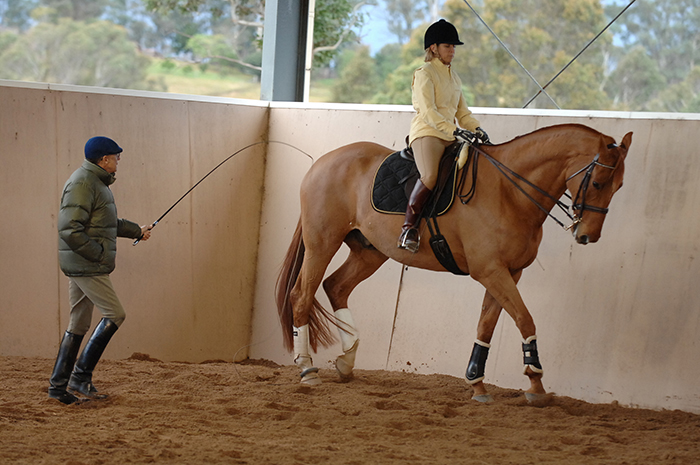
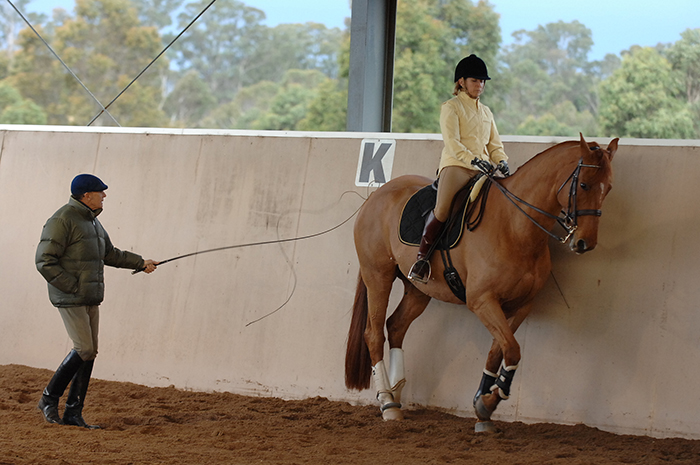
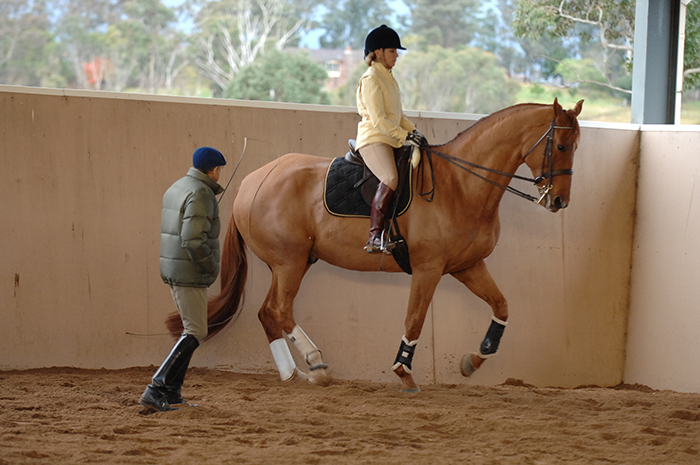
You go home with so much to do – not just riding round and round in circles?
“Absolutely. I’m a coach as well, and I bring my students to Miguel about every six months to check that I am on the right track. It was quite liberating when I realised that there was always an exercise to help – whatever the problem was. It took the weight off my shoulders, okay, when I’ve got a problem, I ask Miguel and he can fix this horse’s particular problem – and it does! That’s wonderful. Miguel will actually go to books and look things up, and say, okay, I think we’ll try this exercise. That’s brilliant, I love the academic side of it.”
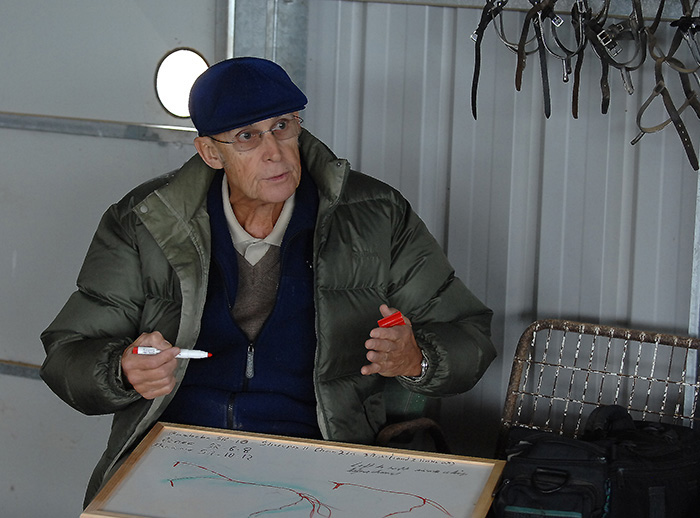
Later I talked about it with Miguel, as his table rapidly was covered with the growing number of books pulled from the shelves of his library…
The reverence you have for academic scholarship – for the texts of the great masters – is that something you got from Nuno Oliveira? Or is that part of the Portuguese tradition?
“Definitely from Nuno, the study and the reading, trying to understand how and why to do things. When you have a problem don’t just think about the problem – the problem has a cause. We can’t solve the problem until we resolve the cause, then work on the cause to go to the problem. If you see a horse making a Grand Prix test, and the horse is not engaged in trot – how can he piaffer? This is what I learned from Nuno Oliveira. If he doesn’t piaffe, then there is a cause, find the problem and solve it at the base. It’s not academic, it’s just rational. If you have a problem you have to see what causes the problem, and how are we going to work gymnastically on that difficulty? When the horse feels strong and comfortable, then he will do what we want him to do.”
Story continues below the advertisement
Yet the first book Nuno gave you was not one of the classic French texts but the German, Steinbrecht?
“Steinbrecht. Of course Nuno Oliveira was a very great admirer of Baucher, of the techniques of Baucher and the principle of Baucher that the horse should be very light, very obedient, very happy, very free, doing the things on his own, in self carriage. It is very hard to talk about the method of Baucher because all through his life it was changing. All through his life, he was finding the new technique, the new thing that would be the best, the latest thing that would solve everything and everything before that was wrong.”
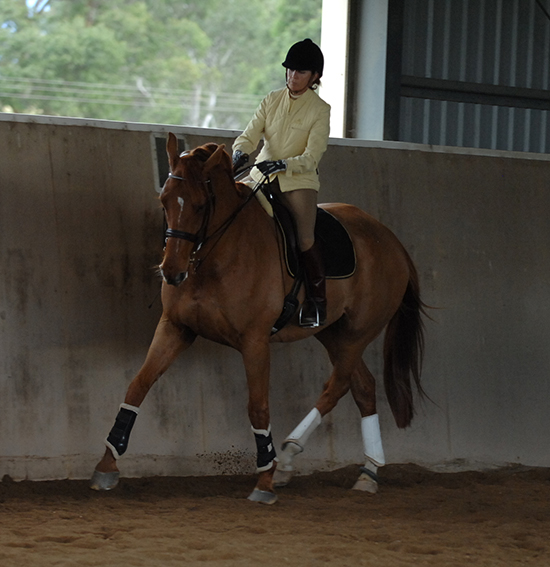
“We can’t interpret Baucher by the technique of flexions, or combined effect, or whatever – we have to see the philosophy, and the philosophy was what Nuno pursued, but he knew that la Guérinière was the classical, and it was Steinbrecht who put la Guérinière into lines that were practical with the horses we ride now.”
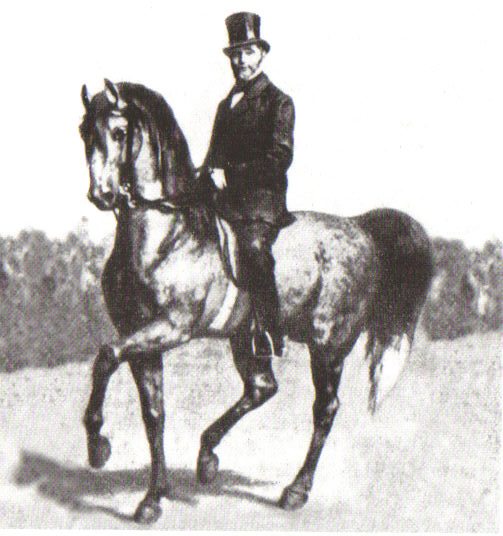
“Steinbrecht was the first book that I read, and I am still reading it, still learning from it. Sometimes I read something that I read ten years ago, and I interpret it in quite a different way now…”
The session with Megan and Jaffa ends with some lovely three times changes and the customary: “Walk, big pat, drop the reins, thank you very much…”
Megan says that one of the things she likes is the logic of the method: “You can’t go wrong. Miguel being away a lot in America, I found difficult at first but I have lessons with his wife Di now, once a week, and Miguel will often ring and tell Di what he wants her to do with me, then she’ll ring back and report. I know I have rung him in America, and said ‘help, this is happening’ and he’s said, try these exercises in this sequence. From a student – and a teacher – point of view, that’s brilliant, and I’ve never found that dedication in any other teacher.”
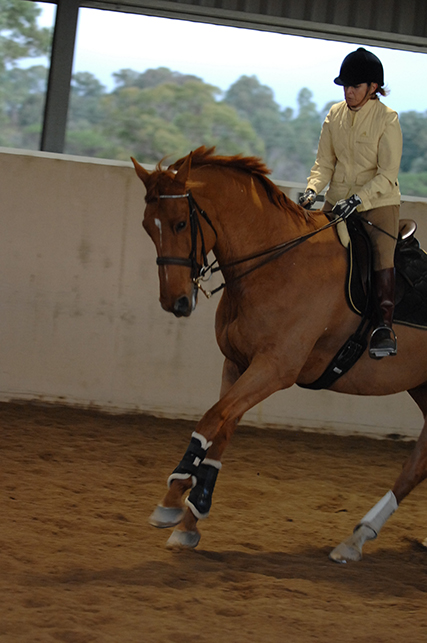
You are a competitive rider – you want to win?
“I do, big time. My horse Neversfelde Jaffa, has been very successful. He scored nearly 67% at Advanced, the other weekend. I have always been a competitive person, and I don’t like to go out ill-prepared. I found with the warm up exercises that Miguel has given me for competitions have been invaluable. I am a competitive rider and I don’t find it a contradiction at all, coming to Miguel.”
It’s nice in some mystical sense to be connected to a whole tradition of riding that goes back to Guérinière…
“The history! Miguel will give me chapters to read, and say, what did you think of that. And I’ll underline things I don’t understand and come back and he’ll explain. It’s that academic and traditional historical way of riding beautifully – and that’s what I wanted to do. I can’t hold and kick, I just can’t do it. In fact you can see sometimes, if Jaffa gets too low, it’s a struggle for me. He has to be light on the half halt. And that is the emphasis, I was not allowed to progress, until we had him light. Unless he is light, if you just push him on, you are pushing him more out of balance. That’s where people get a bit confused. You can see that there’s lots of work forward with that horse. It wasn’t just dinking around and little tiny steps, it was a lot of go, come back, go, come back. Lots of transitions. I have had lessons in Switzerland too, and there’s no difference.”
Miguel remains a riding instructor who rides, and remarks to me that he would find it hard to imagine a life without riding:
“Even after my accident where a horse reared and broke my pelvis, sometimes I have to ride in a little bit of pain but there are a lot of very good pain killers. To teach, riding helps me a lot. To be able to get on the horse and have the feeling is important, and also being able to demonstrate to the rider what you are asking is possible. A lot of students, they believe in you. They don’t consciously think you are a liar, but in their subconscious they are thinking, ‘I am trying to do it, but it is not happening…’ Then if they see me ride the horse, and they see it is possible, they say, oh, if he can do it, I can do it too. They get the image and they go and do it. It also gives me the feeling of the difficulty they have with the horse. Even if I know already, I have more feeling for what they find difficult.”
“I was very lucky when I was young, I used to ride the horses of Nuno Oliveira. When I was 12 years old, I did a demonstration where I made 200 one time flying changes – in figures of eight and half passes and everything – I was happy like a bird going around. I didn’t learn the aids for this, but in my subconscious I knew what I should feel with the flying change every stride. Riding the piaffer and the passage on Nuno Oliveira’s horses, I always knew after that what I was trying to achieve – I was never able to achieve as good piaffe and passage as Nuno, but I always knew what I was trying to do. I know exactly what I am looking for and that helps a lot.”
“Nowadays, we don’t have school horses any more, well not so many that we can use to teach the rider to ride a flying change every stride, to have the feeling.”
“Sometimes the riders don’t understand the balance they are looking for. If I put the horse in a balance, and then they ride the horse, and they say, okay, this is the balance I am looking for. Once they have that feeling it is made much easier because they know exactly what they have to feel when they ride. I think that helps my students.”
“But don’t think because I get on the horse for ten minutes, that the horse is going to learn the movement, or to take that balance or impulsion, of course not, I aim to put the horse a bit easier at that moment and that gives the rider the feel he is looking for – they still have to do all the gymnastic exercises.”
“It is only God who can ride the horse and all of a sudden ask him to collect and do piaffe and passage, and pirouettes in the canter. You can put the horse in the balance, but the riders still have to do the gymnastics.”
Miguel recalls the time I rode his grey stallion, Rubens, trying to get the feeling of riding one times changes. It’s the only movement I can think of where if you wait to see if the horse accepts the aids before you make your next request, you are too late… I kept getting lovely two times changes until Miguel persuade me not to listen to the horse’s body and just keep changing the aids. Hey presto – ONES!
“If I have a school horse, like you remember a long time ago, when we had Rubens, and you had a lot of fun riding him and doing one times changes. It was difficult but it was fun. If you are trying to train a horse to do changes every stride and you have never done it before, it is difficult – it is much easier if you know the feel you are looking for.”
“I admire the riders nowadays much more than the riders in my days, because they have to do it right from the start, without the luck I had to ride educated horses. Today’s riders have to work much harder to find out for themselves – they have to discover the feeling by themselves. On the other hand, they have horses that are much more suitable for the movements. In the past the Thoroughbred coming off the track was what we used to train to make a Grand Prix horse. Now we have such fabulous horses… how could I think of not riding them?”
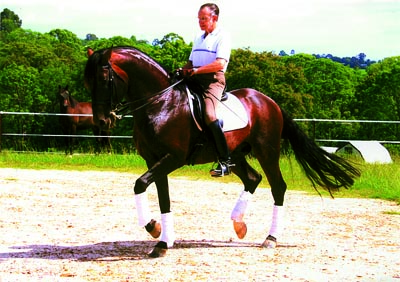
This is the last in our series… thank you Miguel, I miss you my friend – CH
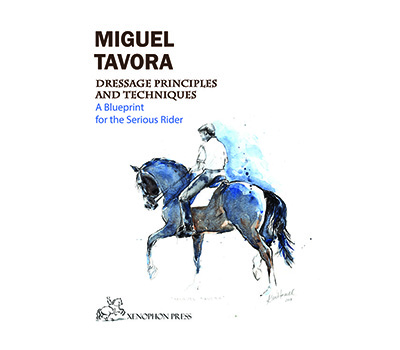
Copies of Miguel Tavora’s book at available from the publisher Xenophon Press

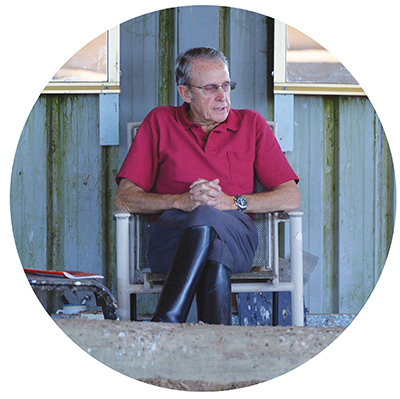
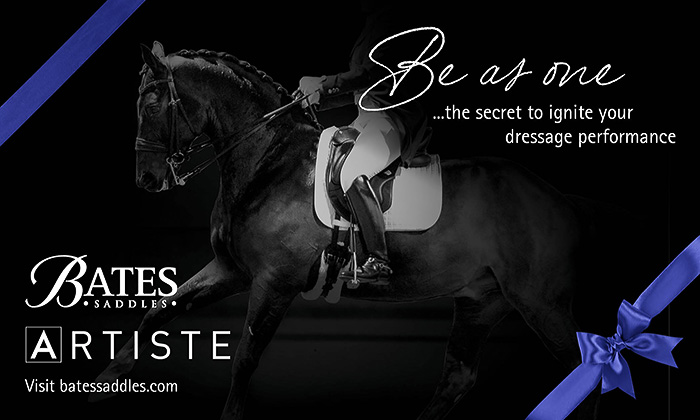

Hi Chris,
I have just re-read this article. You have captured Miguel absolutely. I wish he was valued more here. I am still training with him and we are working with a lovely Fidertanz gelding. Keep up the wonderful work. The Horse Magazine is still my favourite.
Very best regards,
Megan Joerg.